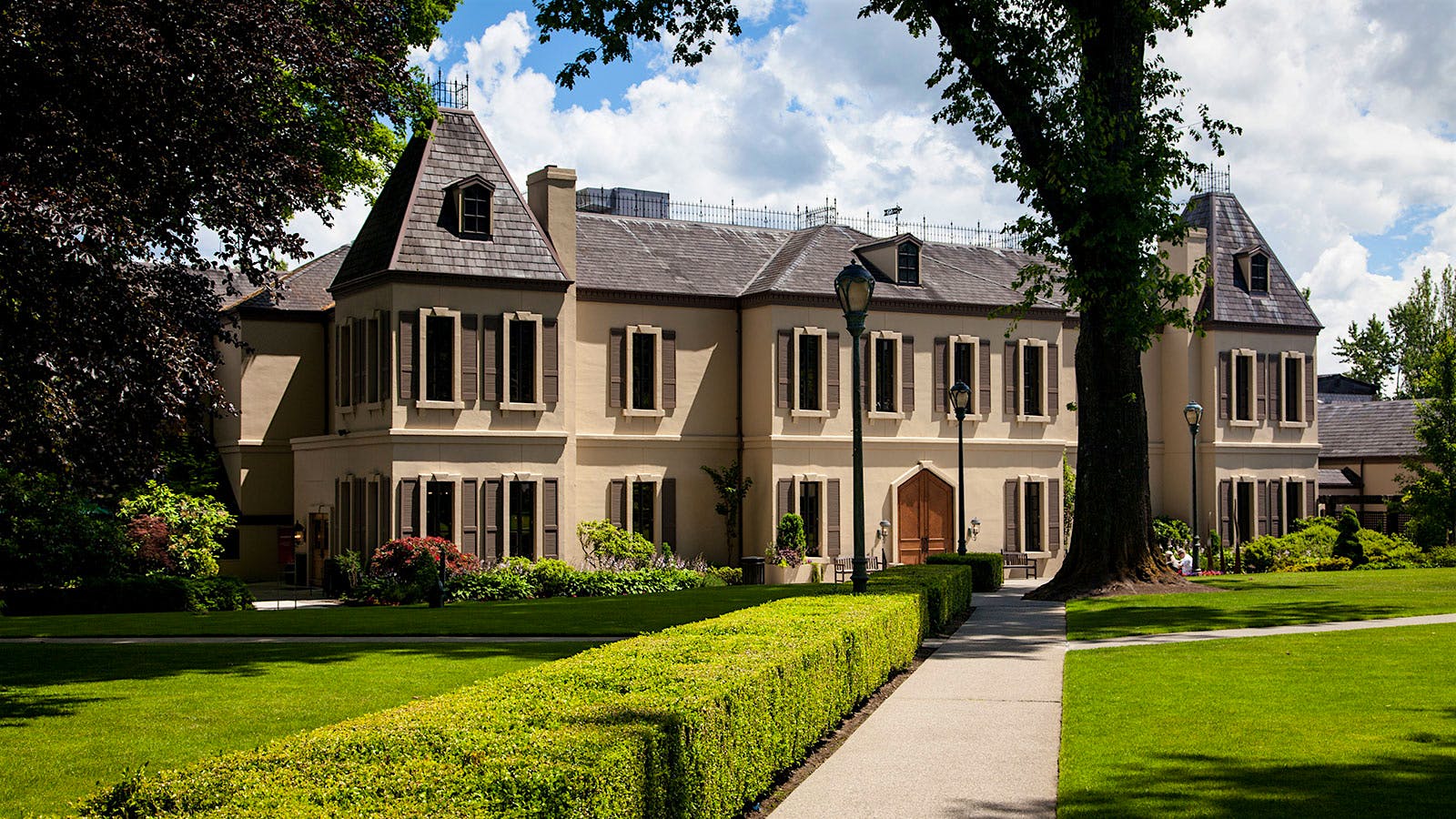Products You May Like
Washington wine giant Chateau Ste. Michelle is continuing to shake things up, with news this week that it quietly put its 118-acre Woodinville property on the market. The site has been the winery’s home base since 1976, when the company built the iconic chateau that graces the wine’s labels.
The move follows Ste. Michelle’s decision to consolidate all of its winemaking to existing facilities in Columbia Valley, which lies east and across the Cascades from Woodinville and the Seattle metro area. The winery’s reds have long been produced in Columbia Valley, but its vast white wine production remained in Woodinville until this harvest. Ste. Michelle produced 3.1 million cases in 2020.
The move comes on the heels of the $1.2 billion sale in July 2021 of parent company Ste. Michelle Wine Estates to New York–based private equity firm Sycamore Partners.
“Producing wine in Woodinville so far removed from our Eastern Washington vineyards has resulted in decades of shipping millions of gallons of white wine to our Woodinville facility and burning nearly 75,000 gallons of diesel through over 1,600 freight trips each year,” the company said in a statement. “We are evaluating how to best utilize the facility going forward, including exploring a potential sale of our Woodinville property, or perhaps a portion of it.”
The company declined further comment, but according to news reports, the Woodinville property includes a 100,000-square-foot warehouse, a nearly 50,000-square-foot barrel storage facility, plus the chateau, event facilities, gardens, offices and more. The real-estate listing said the property was zoned for multiple purposes and was “primed for redevelopment.”
No wine region in America is more dependent on a single company than Washington is on Ste. Michelle. It’s a symbiotic relationship with growers and other wineries. Ste. Michelle Wine Estates makes about 60 percent of the wine in the state, and it supports and promotes the industry and wine tourism. Many of the state’s leading winemakers earned their stripes at Ste. Michelle before striking out on their own.
If Ste. Michelle sells its Woodinville facility, there will be repercussions for the area’s booming wine tourism industry. There were no wineries or tasting rooms nearby when Ste. Michelle opened in 1976, and today there are more than 130 in four different districts. Ste. Michelle has long served as a shopping mall’s anchor store, drawing in consumers who then patronize the nearby smaller, family-owned wineries as well, which benefit from Ste. Michelle’s advertising and traffic.
These developments are a long time coming. Ste. Michelle CEO Ted Baseler retired in 2018, and veteran winemaker Bob Bertheau left in 2021. After years of impressive growth, the company’s production volume declined by more than 1.2 million cases between 2017 and 2020, according to Impact Databank, a sister publication of Wine Spectator. In 2020, the company wrote off $292 million worth of wine it couldn’t sell, but current CEO David Dearie said last year that sales and profits were rebounding.
